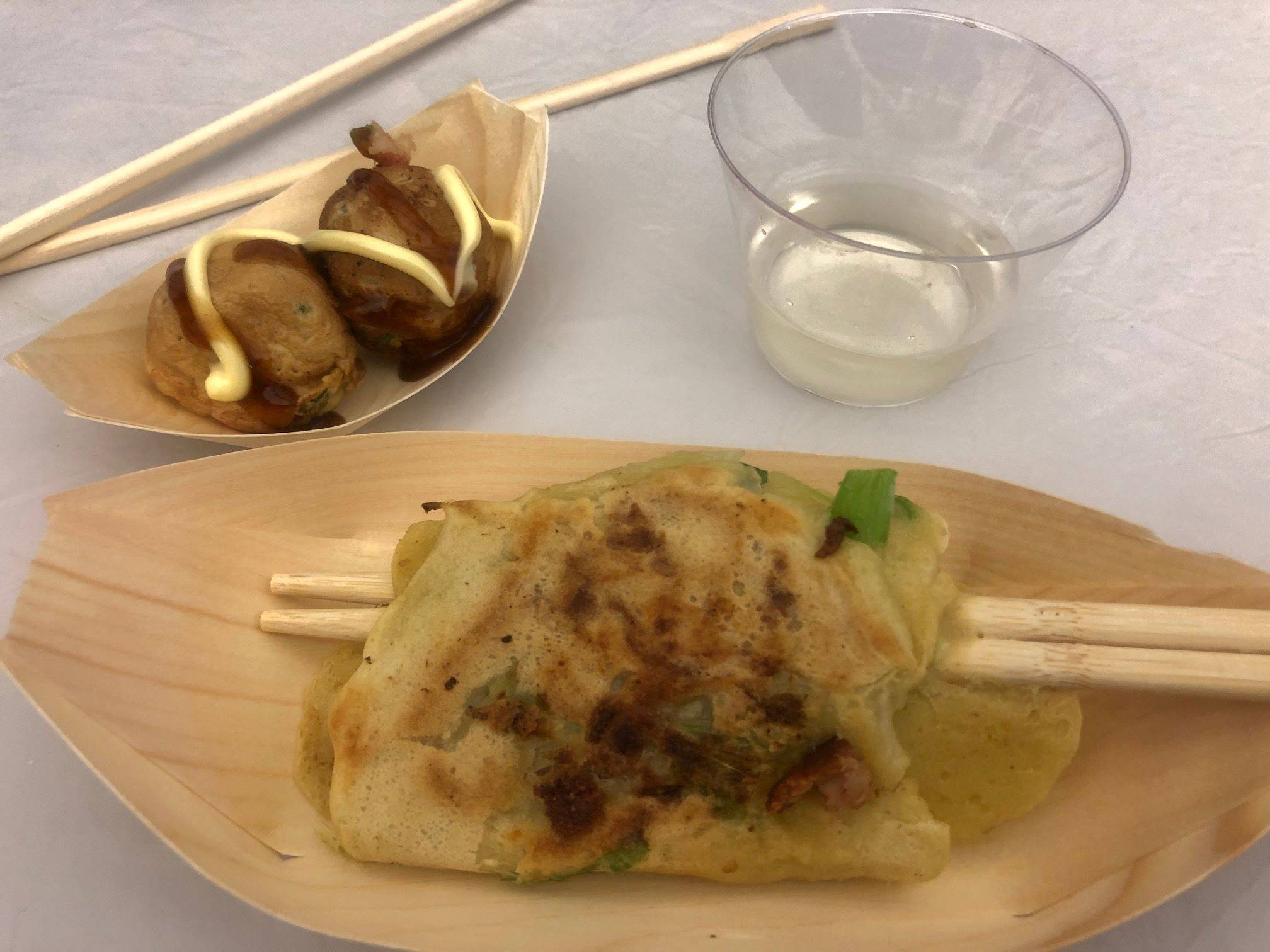Last summer, Japan House teamed up with Miga to host a sake pairing dinner. I’d had sake before, but didn’t really know much about it: how it was brewed (much like beer but with different ingredients), its historical roots, and cultural significance. That experience gave me a greater appreciation for sake, and I learned a lot. Jonathan Edwards, a sake specialist from Vine Connections lent his expertise to that evening, and returned for the Street Food & Sake tasting event at Japan House on Friday evening.
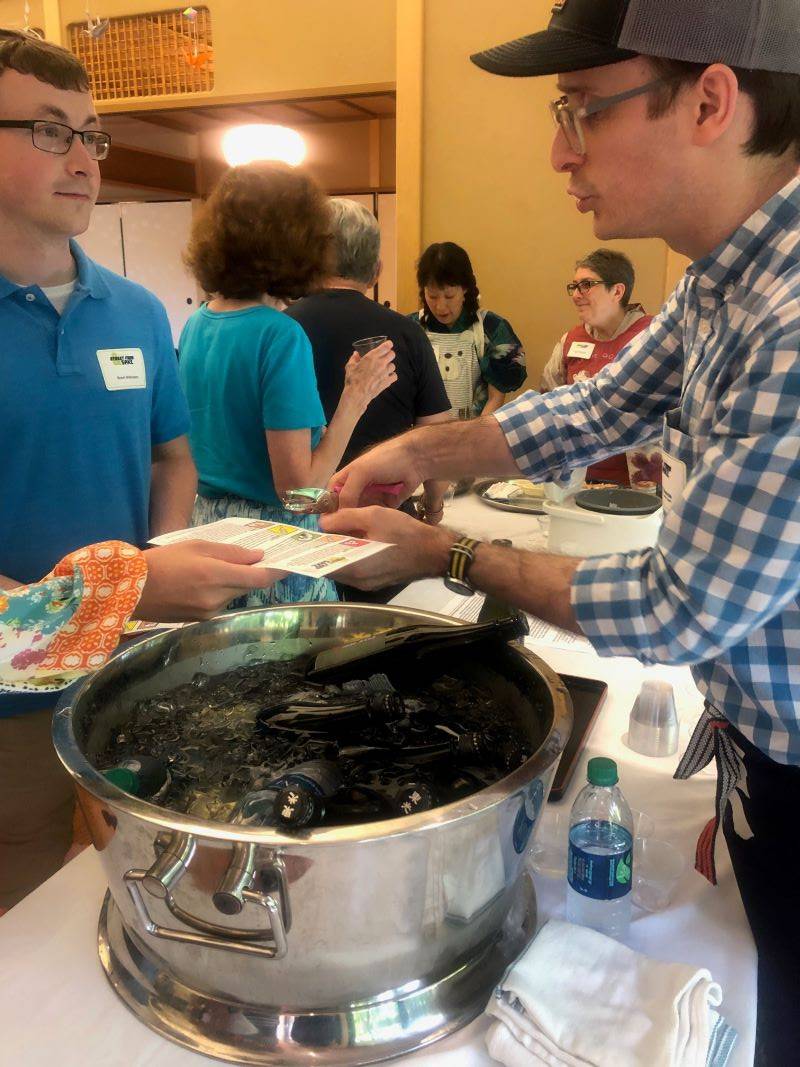
Edwards brought four types of sake for sampling alongside Japanese street food prepared by Michael’s Catering and the Japan House staff. The experience was much more casual than last year’s sake pairing event, and it was meant to be that way, as a glimpse of the types of food you might encounter visiting Japanese street vendors. Upon entering Japan House and slipping off our shoes, we were greeted with a sake cocktail. The entryway was quickly getting crowded with guests, so I didn’t ask questions about what we were drinking, but it was sweet, refreshing, and delicious.
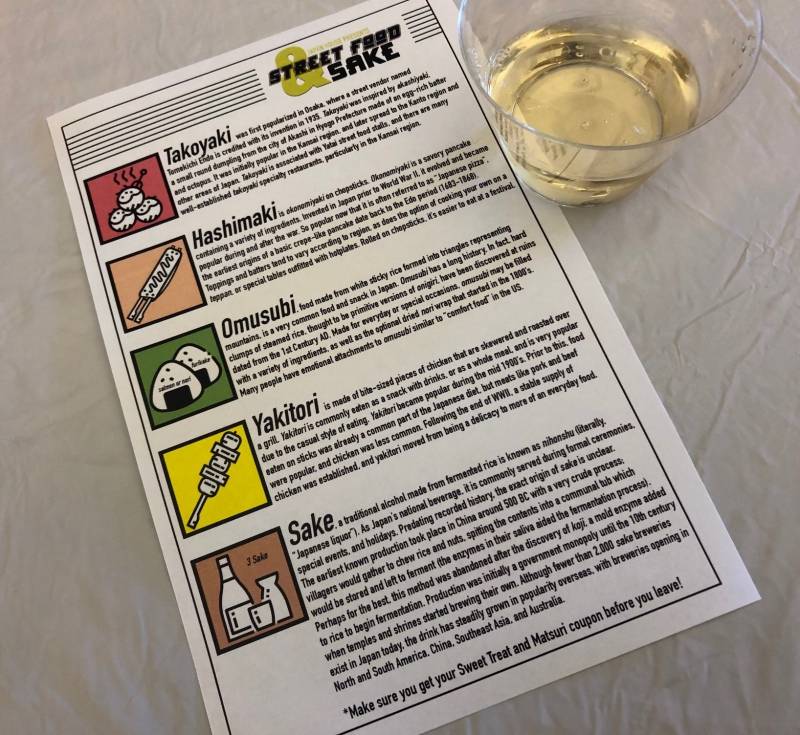
We were also given our “passport” for the evening, which served as a bit of education about the foods we would be eating as well as our punch card as we visited each station. With two indoor stations and one outdoor, we could choose our path and our pace.
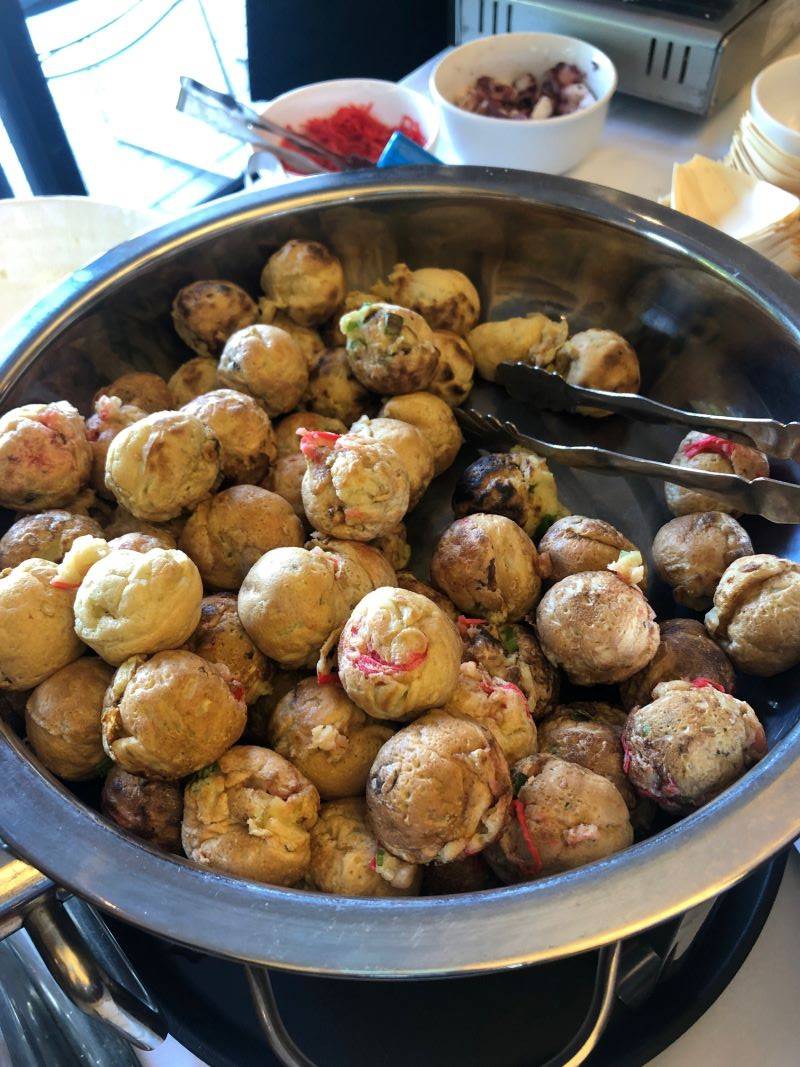
First stop, the takoyaki and hashmaki station. According to our passport, takoyaki was invented in 1935 in Osaka, and grew in popularity in the Kansai region of Japan, and is now commonly found throughout Japan. These tasty bites consist of an egg based batter with bits of octopus, tempura, pickled ginger, and green onion. You could also top them with Worchestershire-style sauce that had a hint of sweetness to it, Japanese mayonnaise, and bonito (fish) flakes. They were delightful. The egg taste definitely came through, and between that, the seasonings, and sauces I think you could eat these and not even realize you were consuming octopus. Personally, I’m down with octopus, but if you weren’t quite sure about it this is a great vehicle for a first taste.
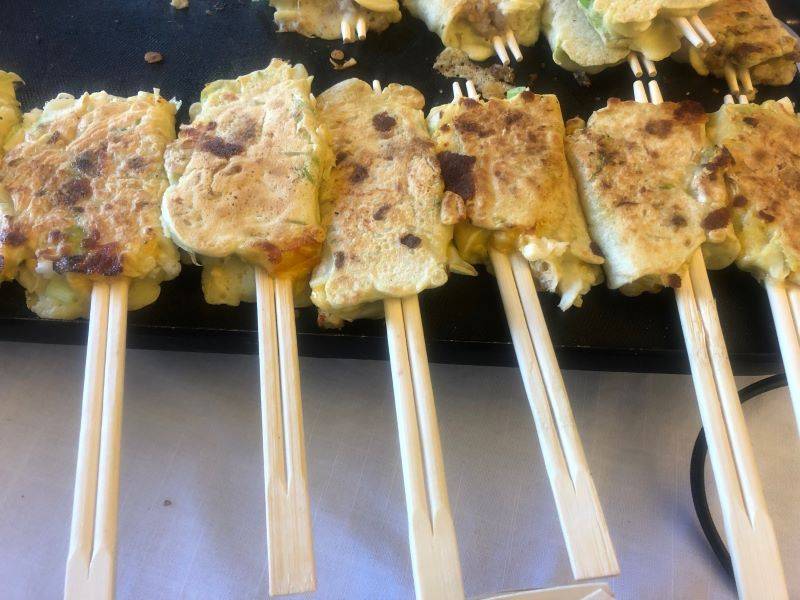
Hashmaki is a variation of okonomiyaki, a savory pancake. In order to adapt the popular dish for easier festival consumption, it’s rolled onto chopsticks while it cooks on the griddle, so you can pick it up and eat while walking around. They were making two versions, one with vegetables and the other with pork belly, so I chose the latter. I don’t pass up pork belly. It had a mild but pleasant taste. I wish the pork belly would have shined a bit more, as I think it would’ve added some flavor, but a quick drizzle of sauce enhanced it for sure. I learned that in some regions, when you order okonomiyaki at a restaurant, you’re given the ingredients to make it yourself at the table, which is kind of fun.
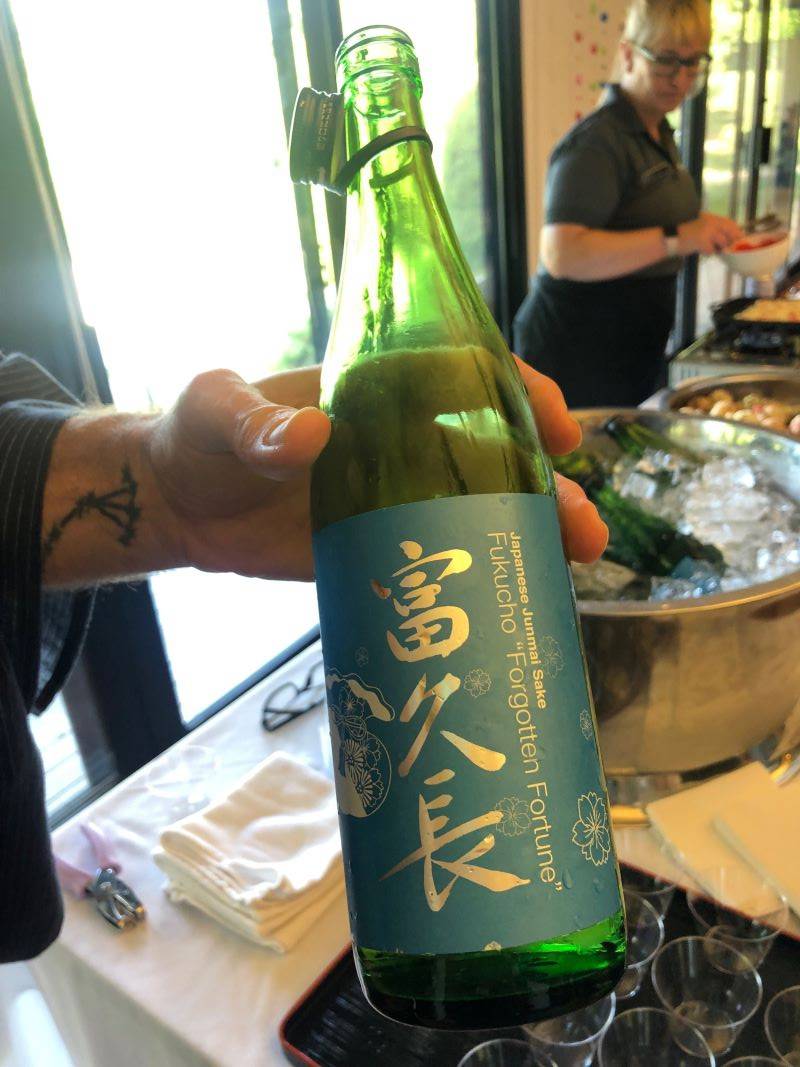
These two items were paired with a sake called Forgotten Fortune from Fukucho brewery in Hiroshima. The brewery is owned by a woman, who is also the Toji, or brew master. She brought an extinct rice back into existence in order to brew with it. The sake was light and you could definitely taste the rice. Rice forward, as the experts say.
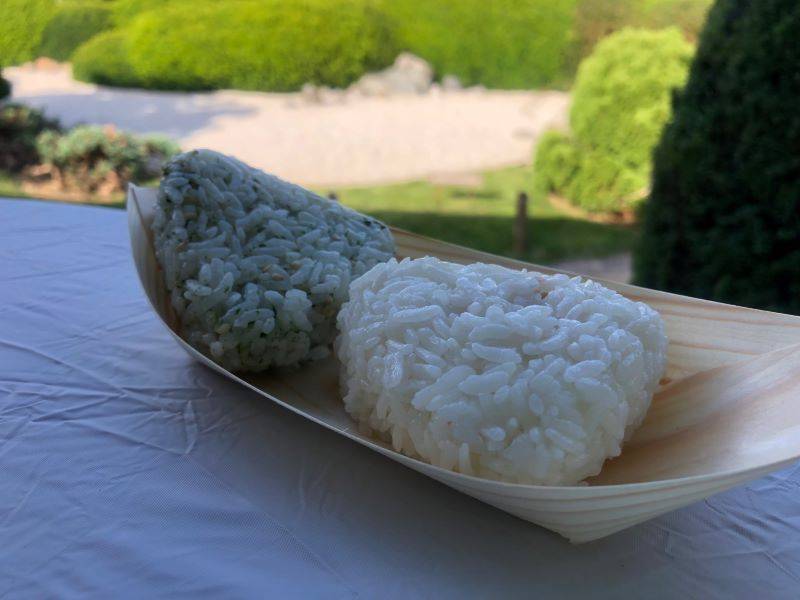
Next up was omusubi, which is not so much street food as portable snack in Japan. It’s Japanese comfort food, and it’s pretty straight forward. The base is a triangle of white sticky rice, then there are various seasonings and fillings that can be added. I had one made with furikake, a Japanese seasoning, and one with salmon filling. The omusubi had that satisfying texture of a sushi roll, and was quite filling.
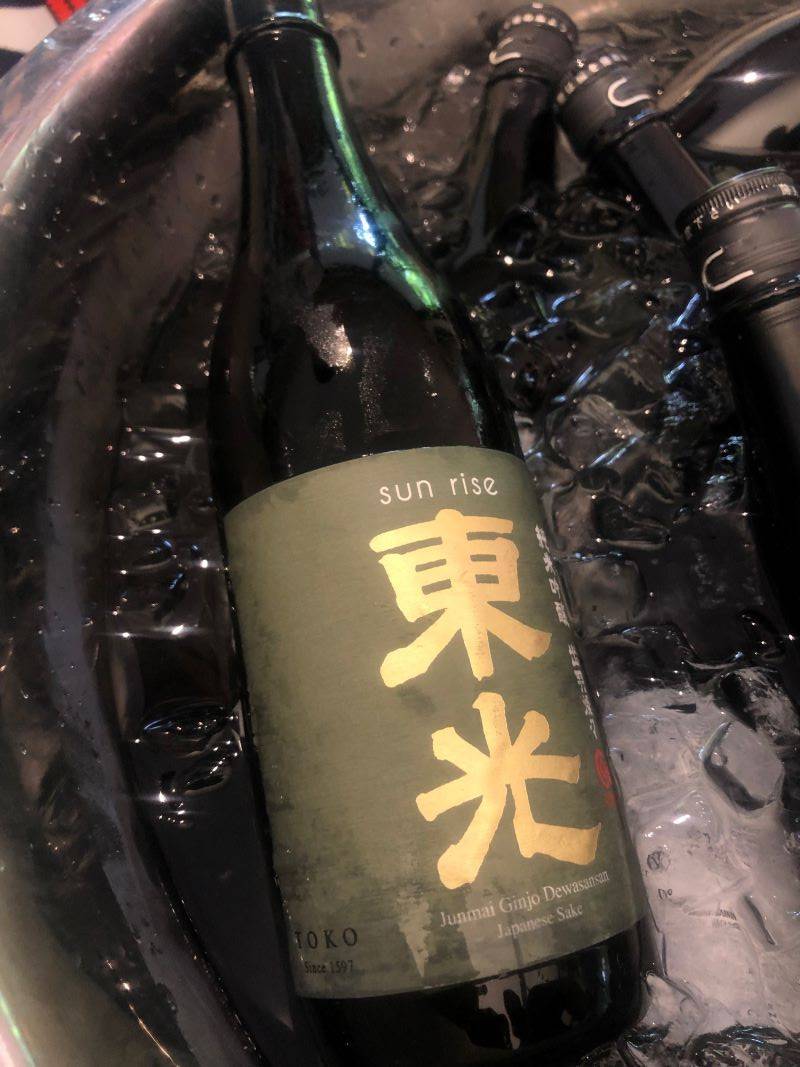
It was paired with Sun Rise sake from Kojima Shoten brewery in Yamagata. The flavor was more complex than the previous sake, a bit floral and a bit fruity, and complemented the omusubi nicely.
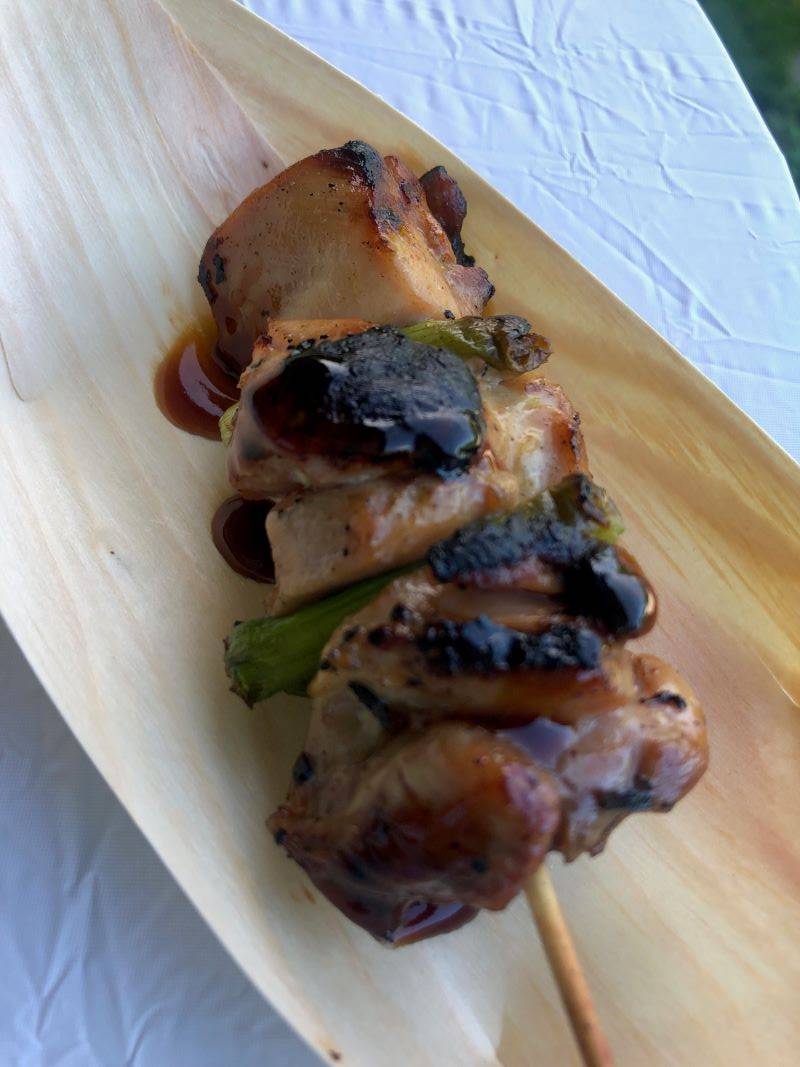
The last station was grilling up the popular yakitori, or chicken skewers. I’ve sampled this before at the annual Matsuri Festival, so I was anticipating deliciousness. I was not disappointed. The chicken was tender, and was interspersed with green onions, which added a great bite of added flavor. I mean, how can you go wrong with grilled food on sticks?
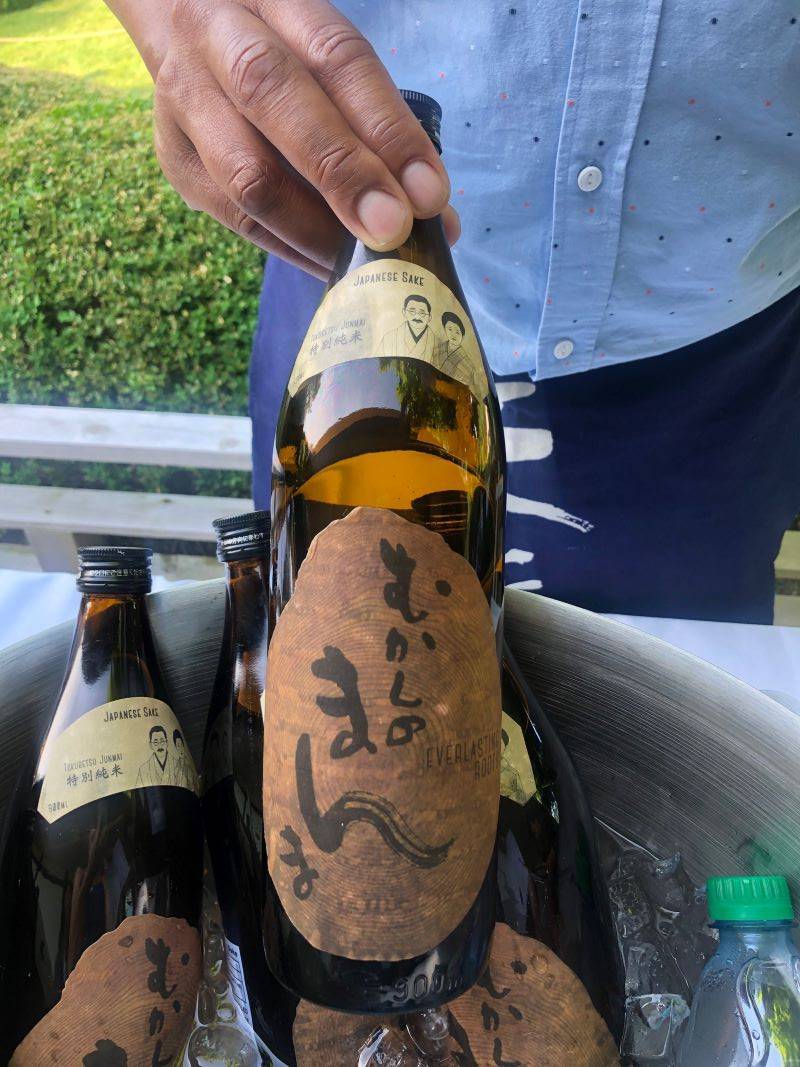
This dish was accompanied by my favorite sake of the evening, Everlasting Roots from Yamada Shoton Brewery in Gifu. It was the most full bodied, so it held up well with the hearty food. As I was searching for more information on this particular sake, one of the first results that came up described it in this way: “If Ron Swanson were to drink a sake, this would be the bottle.” I just thought that was wonderful and perfect, given Nick Offerman’s history with Japan House.
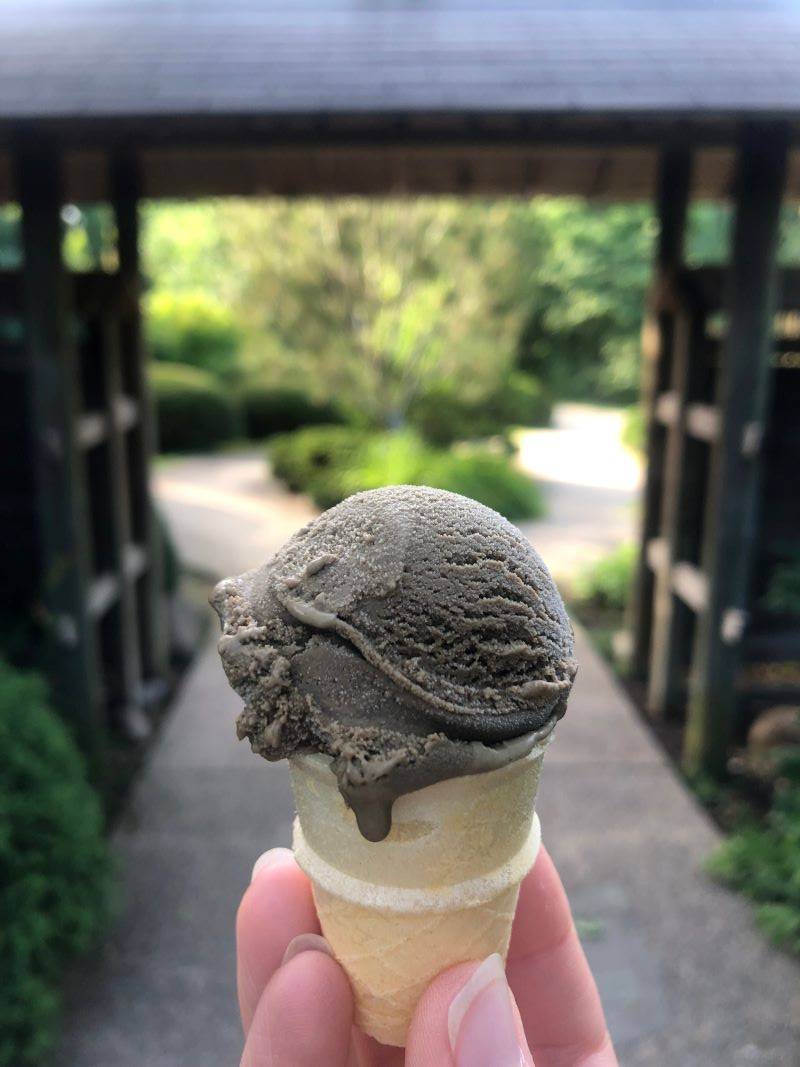
With all of my punches collected and my belly full, it was time to head out, but not before stopping by the front desk for a to go treat, which was basically the cutest little ice cream cone I’d ever seen — so refreshing on a hot summer evening. One thing I’ve come to appreciate about Japanese desserts is their subtle sweetness, and this ice cream fit the bill.
Kudos to Japan House for their continued outreach to the community with events like these, allowing C-U to experience just a taste of Japanese culture.
Photos by Julie McClure








